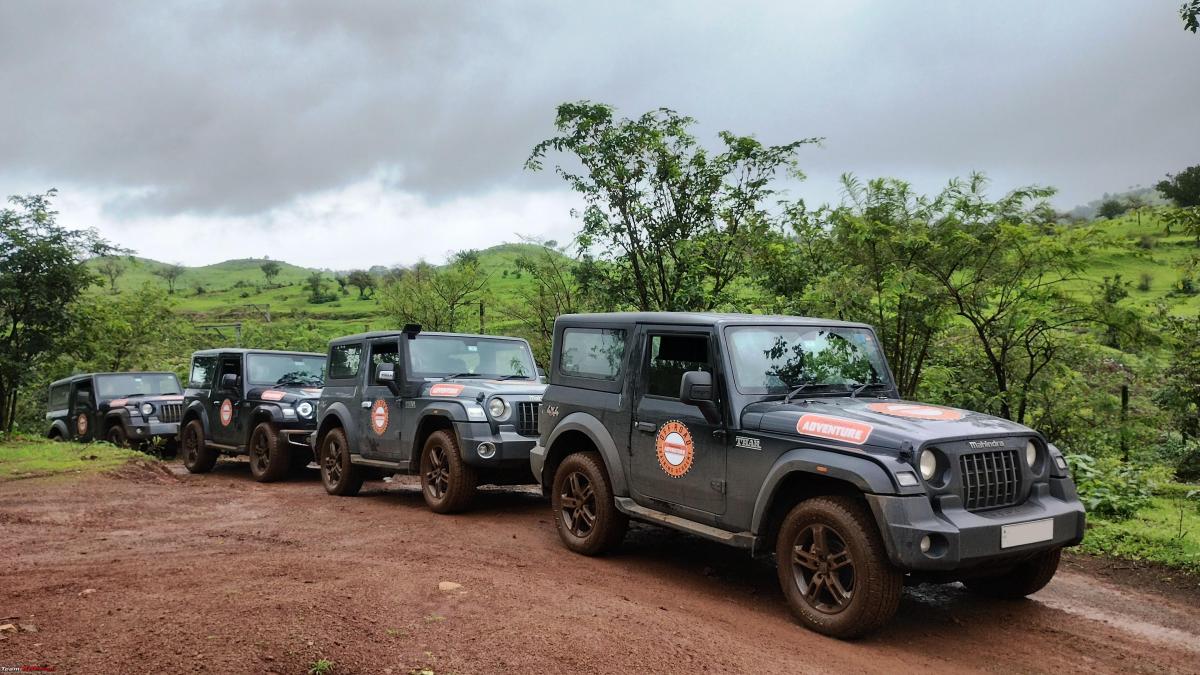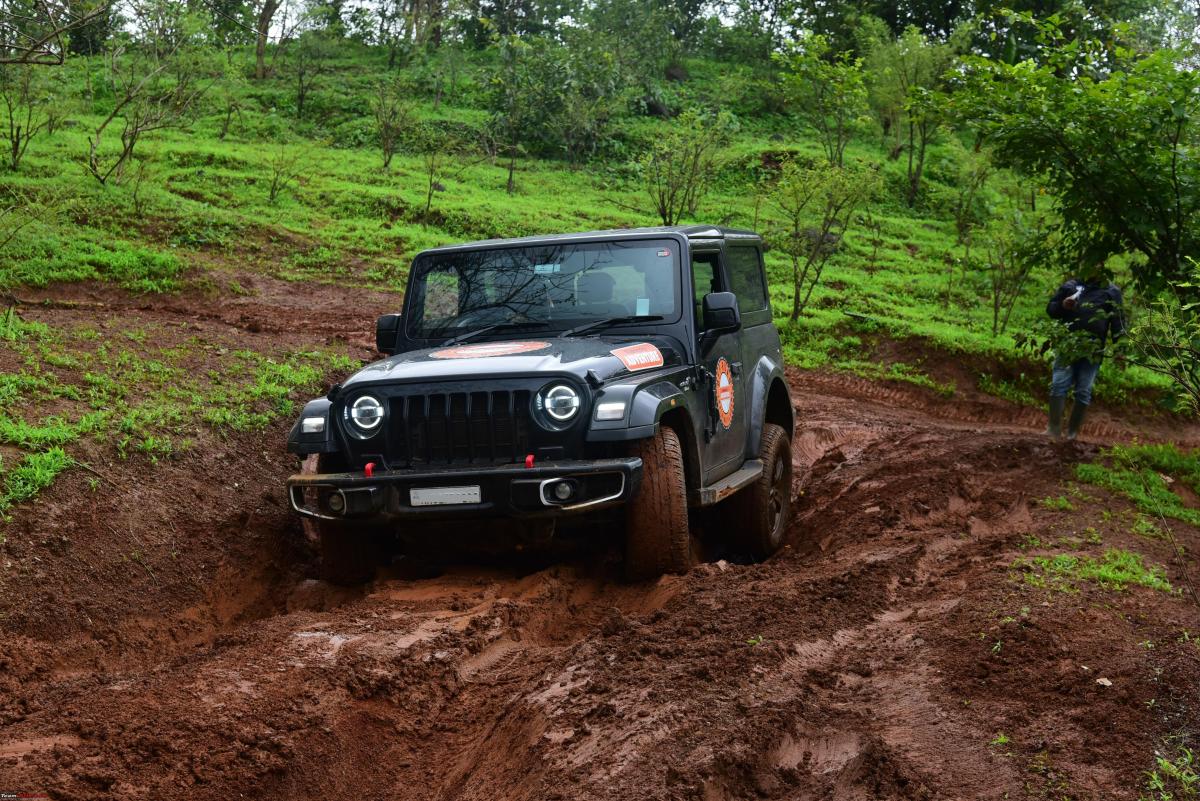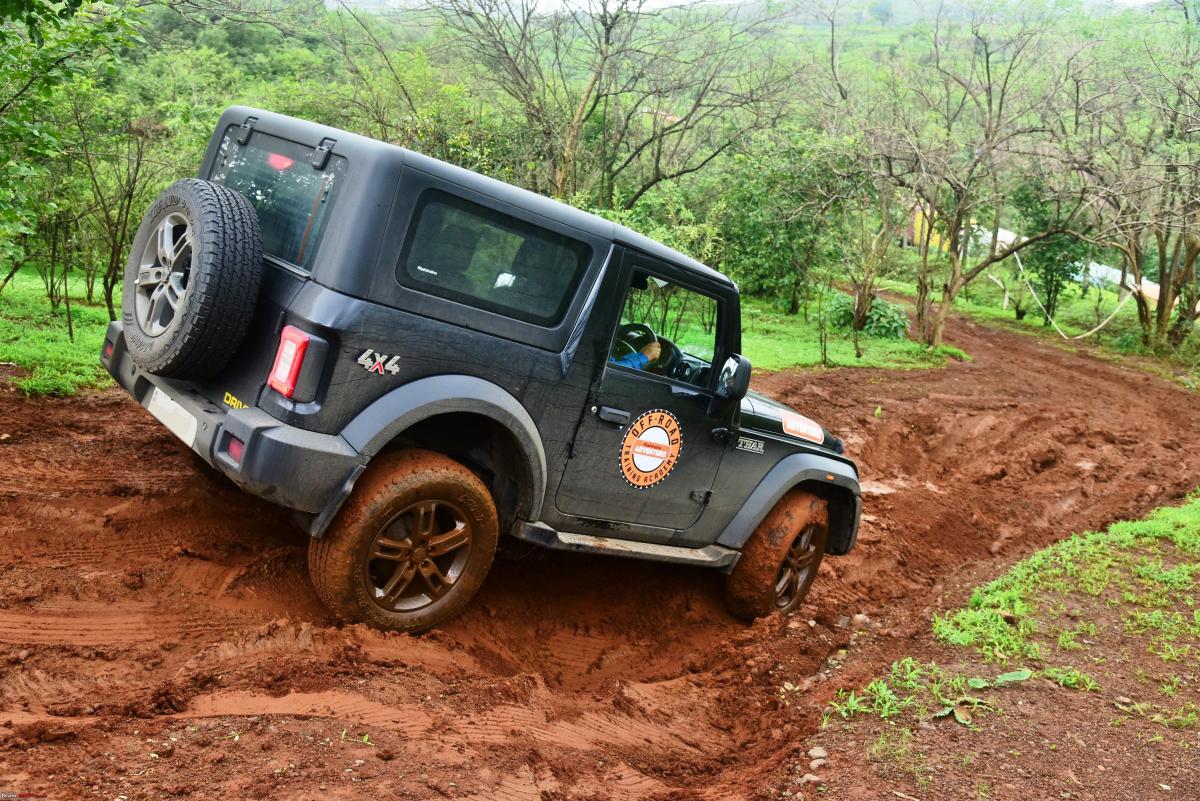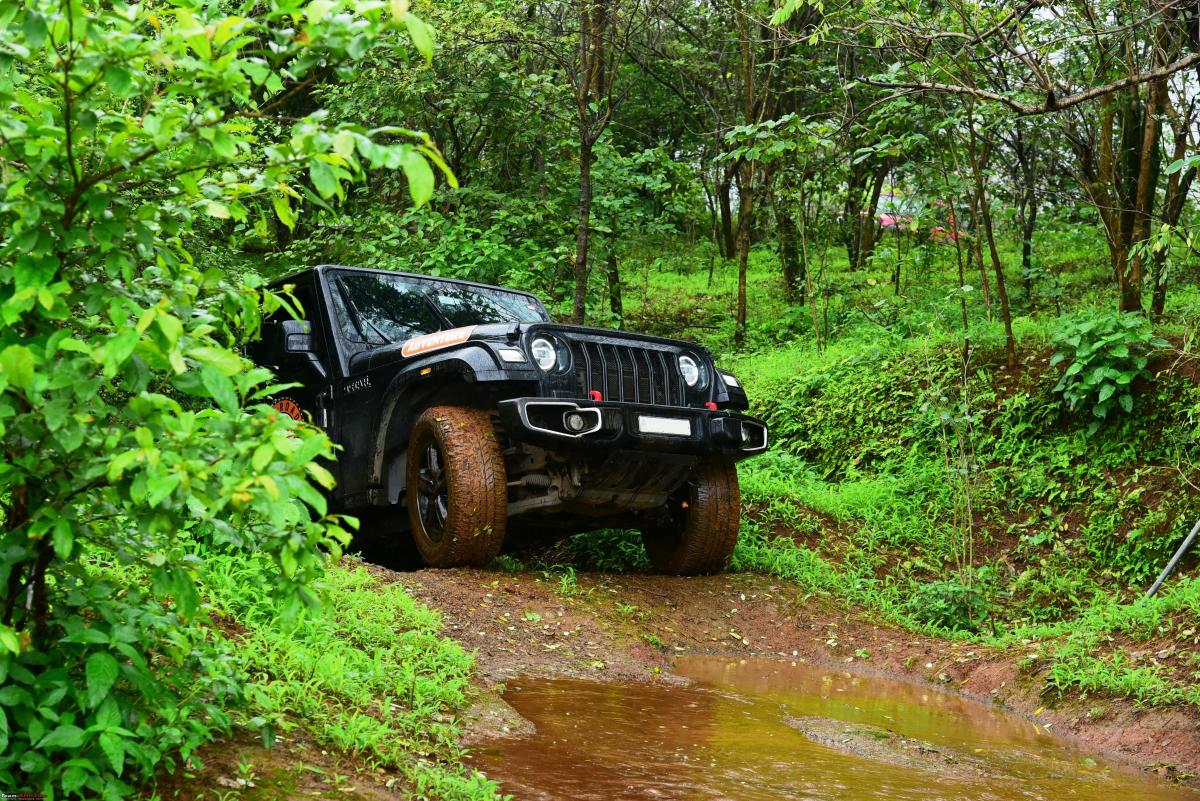News
Experiencing my Thar 4x4 AT's off-road capabilities for the first time
I knew the SUV was an immensely capable vehicle but it took an event like that to put the capabilities to the test.
BHPian arunpools recently shared this with other enthusiasts.
Right from day one I have been itching to give my Thar a proper stretch for its legs (ok.. wheels). The best I have been able to were a bunch of small stuff on the side of tarmac roads. So, as luck would have it, while I was doing my usual stuff over the internet on a fine Saturday evening, I stumbled upon the Mahindra 4x4 Academy site. Viola! They are doing a Fundamentals course at their Igatpuri (near Mumbai) off-road course. I hurriedly booked a place in their event on Aug 5th. After confirming the payment for the event, I pinched myself to ensure I wasn’t dreaming. Every single time they have hosted such an event, I have reached a little too late.
About the Academy
Mahindra 4x4 Adventure Academy at Igatpuri is the place where the new Thar was born (according to blokes from Mahindra Adventure). They tested the vehicle through the many obstacles of varying difficulty that they have custom-built out of 28 acres of wet, slushy and hilly private property.
At Igatpuri they host many such events year-round like the one I just attended but with the exception that people who participate usually get a M&M vehicle that’s owned by the academy. In my case, from last year on, they have started to host a 4X4 Fundamentals Course in which one shall bring their own New Thar to put it through its paces.
To take part in any of their events, which they host all around the country, one must keep logging onto their site (Mahindra Adventure) every few weeks. That’s probably the only way unless you have the habit of crawling through the Thar Adventure Connect app in the vehicle’s infotainment.
The Event
A few days into D-Day, I called my instructor at Mahindra Adventure. We had a casual talk about what I should expect and all. Towards the end of the call, however, he asked whether I had a radiator guard installed. I said I did, nothing fancy but the standard one the car came with. ‘That would be enough’ he said. I got a bit worried about what I was about to put my car through, mostly because of his interest in knowing whether I had the guard. I surely didn’t want any lasting damage to the vehicle.
The event day finally came and I started from Mumbai at 6:30 AM in the hopes of reaching Igatpuri by 10 and then probably doing some sightseeing till the event start time of 11:30. Nearing the foothills of Igatpuri I realized that I was going to reach there too soon and relaxed to some 60kmph on cruise control while enjoying the scenic monsoon landscape.
I remember pressing the cruise-off button but all of a sudden the infamous ‘Engine System Check’ lamp lit on the dash! My heart just jumped from its socket and I could feel it beating in my mouth. This event at Mahindra was a dream come true and now thoughts of a flatbed and I crawling myself with my sorry face back to my home flashed through my mind.
I recollected myself and pulled the vehicle to the side of the road and pressed control+alt+del.. Ahem .. cough.. cough. I switched off and restarted the car. Like in the Hollywood movie Independence Day, when the smoke cleared after the nuclear strike on the hostile alien ship, the Engine System Check lamp remained after the restart! But then I remembered that the car was behaving pretty much like how it should; I had good accelerator authority as any other time, the steering and the brakes felt normal and there were no other lamps on the display other than this ‘Engine!’ thing that was threatening to ruin my day. After a quick check under the hood and cursing myself for not taking my Chinese knock-off OBD scanner along, I started the car and headed up the hills to the Mahindra event site.
The car behaved pretty much the same en route except for the now-dead cruise control buttons. Once I reached the site I called my SA. He gave me a quick pill for the issue which was to shut the car down, remove the key and wait for some five minutes and restart (I missed the 5 minutes part the last time). That was it, thank god! But by now I had the OBD lamp continuously ON. This one stayed ON until the start of the event and went away on its own. Ok, not entirely on its own but by restarting the car a few times, about which I read on the internet.

Before you get to drive, they first teach you a bunch of fundamentals. They ask to put the car to 4 Low and select AT Manual mode. This was to be the case throughout the course. They hand you a walkie-talkie and you are asked to tail a pilot vehicle that’s driven by a trained instructor. Their instructions were brief and the convoy of four participants along with the pilot Thar set off without wasting much time after the quick lecture.
They also have spotters so that you don’t turn upside down. Though they do teach you what to do if you do find yourself belly up (not much, just hold on to the steering wheel for dear life until help arrives). The car is built well and the only worry you should be having when lying there, with the sunny side pointed the wrong way, should be about how you would explain the incident to your insurer. Though they did not talk about the last part, they did take my signature on a bunch of papers on their ‘limited liabilities’.


The very first thing that struck me on the trail was the immense articulation the wheels had. Of course not as much as what Jeep Wrangler with rigid front axle and Sway Bar Disconnect combination would provide.
I remember thinking to myself taking the first turn while making my way through the bushes that if it were any other two-wheel drive car it would have lost traction at that very turn itself. This was not even a numbered obstacle. Not that turning itself was difficult, any car could do that, but the rains had made the track so uneven. Even a momentary loss of traction in a two-wheel drive would get that wheel spinning helplessly, especially when the momentum is kept down low to avoid the trees and branches. That is when it struck me why the Thar is like a fish out of water on the highways. Off-road is where it belongs and now finally I get to see what those wonderful guys Mahindra have kitted it with.

During the small lecture, they tell you not to drive like a maniac. The name of the game is to go slow and steady on the ruts and slush. Not to give gas unnecessarily so that maximum traction is maintained at all times. No hard braking down the slopes as well and it depends more on engine braking. We all know this, I did too, but what I haven't done is the car doing 30 degrees negative slope on slippery slush on which you can't even stand upright without falling over. Overcoming your basic instinct to apply the brake and slow down is very difficult to overcome. The instant you brake and get the wheels locked, your speed remains the same with the exception that now you don’t have any steering control also. Oh, it's crazy! You are doing sideways in a controlled crash. They tell you to walk and check your path so that you can fix the lines before you dive into an obstacle.
During one of the more difficult obstacles which involved a steep slippery downward slope which went into a small slushy stream and then a steep uphill climb, I realized why the instructor had asked whether I had my radiator guard installed. While ditching head into the stream, the bumper did kiss the mud. Later they told me the radiator guard is designed not only to protect the radiator from physical damage (which I doubt), but it prevents slush and ruts from entering the radiator cavity. The guard indeed has a shape that covers the radiator from the front and the sides thereby restricting mud and stones from entering. Then I also realized that this important function would be lost if one of those aftermarket metal covers is installed.

There are obstacles in which you have to wade through bumper-deep water. There they ask you to keep the AC running so that the radiator fans are kept running. While in one of those stints, I could sense the MLD kicking in. Now I think why Mahindra has made MLD optional. Though I wouldn’t know for sure whether MLD remained ON throughout the rest of the course and continued to make a difference, I do believe I could have pulled the whole thing without much help from it. In many of the ascends I could hear the BLD frantically doing its thing.
Out of the four vehicles that took part in the course, mine and another were automatic. The Auto made many of the obstacles look like a breeze while the manual guys struggled somewhat. Probably because of a lack of experience in driving a manual on such terrains but then that’s the whole point. AT seemed to be more forgiving.

Overall the experience was great. I would have never mustered enough courage to throw my car around such an obstacle course or a real-world situation if not for the wonderfully talented Mahindra guys telling me that I could.
Will Jimny be able to do this? Very much or at least I think so. The point is, the course that Mahindra has developed for the Fundamentals event is, on an arbitrary scale, medium level at best. Any car with a proper 4x4, some 200+mm ground clearance, good approach, departure and break-over angles with some reasonable water-wading capability would be capable enough to get through.
That aside, I knew Thar was an immensely capable vehicle but it took an event like that to put the capabilities to the test. I left the Igatpuri with a newfound respect for the Mahindra Engineers and vehicle testers who helped create this beautiful piece of engineering.
Check out BHPian comments for more insights and information.


















